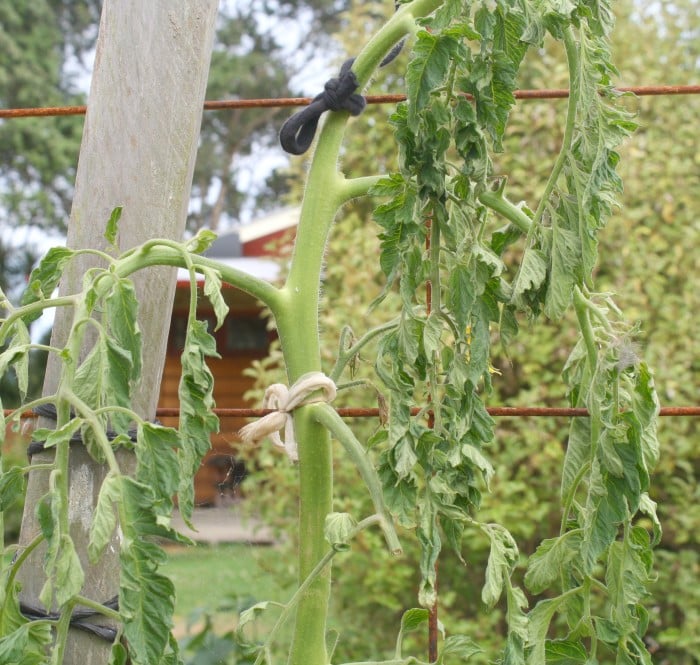Tomato plants are one of the most popular vegetables to grow in home gardens. However, it can be disheartening when a previously healthy tomato plant suddenly starts to wilt. This article will explore the most common causes for sudden wilting in tomato plants and provide solutions to help rescue affected plants.
What Causes Sudden Wilting in Tomato Plants?
There are several possible causes for sudden wilting in tomato plants
Lack of Water
One of the most common reasons for tomato plants to wilt is insufficient watering. Tomato plants need about 1 inch of water per week either from rainfall or irrigation. If soils become too dry, the plants will start to wilt from drought stress.
The good news is that wilting from lack of water can be reversed Thoroughly soaking the soil around the tomato plants will allow them to recover and stand back up within a few hours Make sure to check soil moisture before watering wilted plants – overwatering can also cause issues.
Fungal Wilts
Diseases caused by soil-borne fungus like verticillium wilt and fusarium wilt can also lead to the sudden wilting of tomato plants. These fungal pathogens enter the plant through the roots and disrupt the vascular system, preventing water transport.
Unfortunately, fungal wilts cannot be cured once plants are infected. The affected tomato plants should be pulled up, disposed of, and not composted. Avoid planting tomatoes or related crops like potatoes, eggplants, and peppers in that area for 3-4 years to starve out the pathogenic fungi.
Viral Infections
Tomato spotted wilt virus (TSWV) and other viral diseases can quickly cause healthy looking tomato plants to wilt, yellow, and decline. These viruses are often transmitted by various thrips species that feed on the plants.
Like fungal wilts, there are no treatments once plants are infected. Promptly remove and discard any plants showing virus symptoms. Controlling thrips populations can help prevent spread. Choose tomato varieties labeled as resistant to certain viruses like TSWV.
Walnut Toxicity
If tomato plants are growing under or near walnut trees, sudden wilting may be caused by juglone toxicity. Juglone is a natural herbicide produced by walnut trees that can damage sensitive vegetables like tomatoes.
Try planting tomatoes at least 20-30 feet from walnut trees if possible. Container growing is another option to avoid juglone in the soil. Removing walnut trees won’t immediately solve the issue as roots still contain juglone.
Boring Insects
Tomato stalk borers are caterpillars that burrow into and feed on the main stems of tomato plants. This can obstruct vascular tissues and cause the plant to wilt. Look for small holes and frass near the base of the plant.
Eliminate weeds around the garden that can shelter stalk borer moths. Control is difficult once larvae have entered the plants, so prompt removal and destruction of wilted plants is important to prevent spread. Row covers may exclude the adult moths.
What to Do for Sudden Tomato Wilting
-
Check soil moisture – rule out drought stress first. Water deeply if soils are dry.
-
Search for signs of boring caterpillars or cankers on stem.
-
Inspect undersides of leaves for thrips and viral symptoms.
-
Look for cottony fungal growth at base of stem.
-
Cut open stems and check for brown vascular discoloration.
-
Remove and destroy affected plants to prevent disease spread.
-
Promote air circulation between plants with proper spacing.
-
Control weeds/insect pests.
-
Use mulch to conserve soil moisture.
-
Wash tools after handling diseased plants.
Preventing Sudden Wilts in Tomato Plants
Here are some tips to keep tomato plants healthy and avoid sudden wilting problems:
-
Select resistant/tolerant varieties when available.
-
Check transplants for vigor before planting.
-
Disinfect tools/equipment between plants.
-
Practice crop rotation. Don’t replant tomatoes in same spot.
-
Stake/trellis plants to improve air circulation.
-
Water at soil level and in AM to allow foliage to dry.
-
Apply 2-4 inches of mulch to conserve moisture.
-
Prune lower leaves and remove weeds/debris.
-
Scout for pests and treat if found.
-
Test soil and amend if needed.
By properly caring for tomato plants and responding quickly at first signs of wilt, you can help minimize impacts and keep your tomato crop producing through the season. Let us know if you have any other tips for dealing with sudden wilting in tomato plants!
Why Are My Tomato Plants DYING? Managing Tomato Wilt Disease
FAQ
Why did my tomato plant suddenly wilted?
How do you fix tomato wilt?
What does an overwatered tomato plant look like?
Can too much water cause tomato plants to wilt?
- The Ultimate Guide to Growing Strawberries in Raised Beds - August 8, 2025
- No-Dig Garden Beds: The Easiest Way to Grow a Beautiful Garden - August 6, 2025
- How to Protect and Preserve Wood for Raised Garden Beds - August 6, 2025

